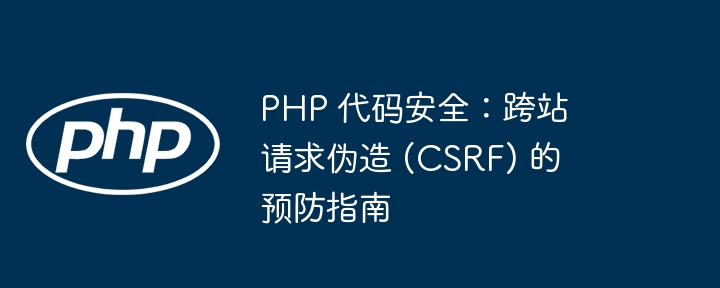Zend Framework中间件:为应用程序添加OAuth和OpenID登录支持
在当今的互联网应用程序中,用户认证是一个关键的功能。为了提供更好的用户体验和安全性,许多应用程序选择集成第三方登录服务,如OAuth和OpenID。在Zend Framework中,我们可以通过中间件来轻松地为应用程序添加OAuth和OpenID登录支持。
首先,我们需要安装Zend Framework的OAuth和OpenID模块。可以通过Composer来安装它们:
composer require zendframework/zend-oauth composer require zendframework/zend-openid
完成安装后,我们可以开始编写中间件来处理用户认证。
首先,我们创建一个名为AuthMiddleware的中间件类:
use PsrHttpMessageRequestInterface;
use PsrHttpMessageResponseInterface;
use ZendDiactorosResponseRedirectResponse;
use ZendStratigilityMiddlewareInterface;
use ZendAuthenticationAuthenticationService;
class AuthMiddleware implements MiddlewareInterface
{
private $authService;
public function __construct(AuthenticationService $authService)
{
$this->authService = $authService;
}
public function __invoke(RequestInterface $request, ResponseInterface $response, callable $next = null) : ResponseInterface
{
// 检查用户是否已认证
if ($this->authService->hasIdentity()) {
// 用户已认证,继续请求处理
return $next($request, $response);
}
// 用户未认证,重定向到登录页面
return new RedirectResponse('/login');
}
}在这个中间件类中,我们使用了Zend Framework的AuthenticationService组件来检查用户是否已认证。如果用户已经认证,我们继续请求处理;否则,跳转到登录页面。
下一步,我们创建一个名为LoginMiddleware的中间件类,用于处理用户登录逻辑:
use PsrHttpMessageRequestInterface;
use PsrHttpMessageResponseInterface;
use ZendDiactorosResponseHtmlResponse;
use ZendStratigilityMiddlewareInterface;
use ZendAuthenticationAuthenticationService;
use ZendAuthenticationAdapterOpenId as OpenIdAdapter;
class LoginMiddleware implements MiddlewareInterface
{
private $authService;
public function __construct(AuthenticationService $authService)
{
$this->authService = $authService;
}
public function __invoke(RequestInterface $request, ResponseInterface $response, callable $next = null) : ResponseInterface
{
if ($request->getMethod() === 'POST') {
// 处理登录表单提交
$identity = $request->getParsedBody()['identity'];
$credential = $request->getParsedBody()['credential'];
// 使用OpenID适配器进行认证
$adapter = new OpenIdAdapter();
$adapter->setIdentity($identity);
$adapter->setCredential($credential);
// 进行认证
$result = $this->authService->authenticate($adapter);
if ($result->isValid()) {
// 认证成功,存储用户身份信息
$this->authService->getStorage()->write($result->getIdentity());
// 记录用户登录成功的日志
// ...
// 重定向到首页
return new RedirectResponse('/');
}
// 认证失败,返回登录页面并显示错误信息
return new HtmlResponse($this->renderLoginForm(['error' => '用户名或密码错误']));
}
// 显示登录页面
return new HtmlResponse($this->renderLoginForm());
}
private function renderLoginForm(array $params = []) : string
{
// 渲染登录表单模板,可使用Twig等模板引擎
// ...
}
}在这个中间件类中,我们使用了Zend Framework的OpenIdAdapter来进行用户认证。在认证成功后,我们存储用户身份信息,并可以执行一些额外的操作,如记录用户登录成功的日志。
最后,我们将这些中间件添加到Zend Framework的应用程序中:
use ZendStratigilityMiddlewarePipe; use ZendAuthenticationAuthenticationService; use ZendDiactorosServerRequestFactory; // 创建Zend Framework应用程序实例 $app = new MiddlewarePipe(); // 创建AuthenticationService实例 $authService = new AuthenticationService(); // 添加OAuth和OpenID登录中间件 $app->pipe(new AuthMiddleware($authService)); $app->pipe(new LoginMiddleware($authService)); // 处理请求 $response = $app(ServerRequestFactory::fromGlobals(), new Response()); // 发送响应 $responseEmitter = new ResponseSapiEmitter(); $responseEmitter->emit($response);
在上述代码中,我们创建了一个MiddlewarePipe实例,并添加了AuthMiddleware和LoginMiddleware中间件。然后,我们使用Zend Framework的ServerRequestFactory来创建请求实例,并通过处理请求和发送响应来实现应用程序的运行。
通过以上步骤,我们成功地为应用程序添加了OAuth和OpenID登录支持。用户现在可以使用第三方登录服务来认证,并获得更好的用户体验和安全性。
以上示例只是一个简单的演示,实际使用中可能会有更多的定制和集成操作。但是,通过Zend Framework中间件的灵活性和易用性,我们可以轻松地完成这些操作,并为应用程序添加各种功能。
中间件是Zend Framework中强大的特性之一,它提供了一种简洁而可扩展的方式来处理HTTP请求和响应。无论是认证、授权、日志记录还是其他功能,中间件都可以帮助我们快速且灵活地进行处理。如果您的应用程序需要用户认证功能,不妨尝试使用中间件来添加OAuth和OpenID登录支持吧!





